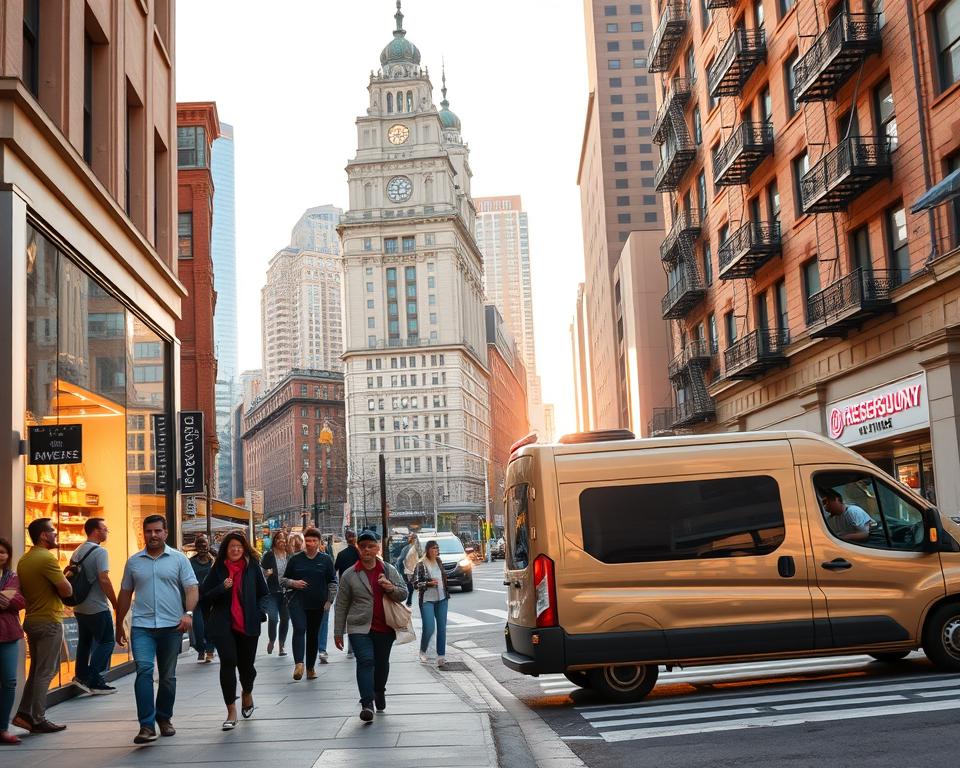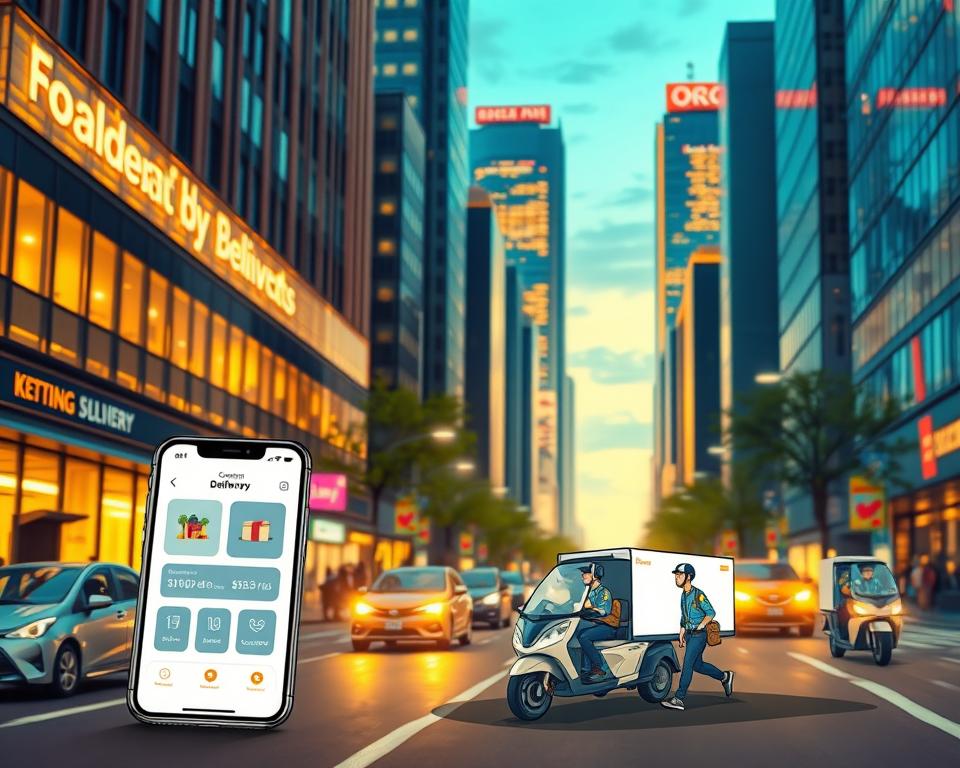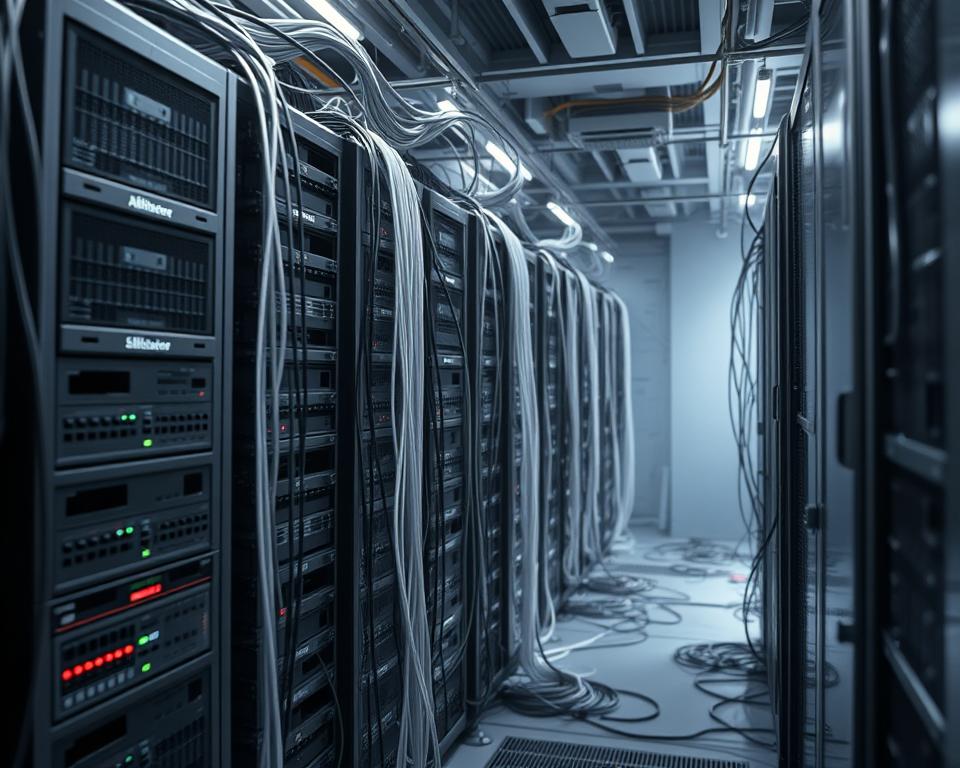The on-demand delivery market is growing fast. More people use apps for quick and easy services. This change is led by apps like Uber Eats, GrubHub, and DoorDash, which meet the demand for fast delivery.
As demand for on-demand delivery grows, it’s key for businesses to know how to develop successful apps. They must keep up with market trends to succeed. This shift has changed how people interact with businesses, making strong app development crucial.
Creating a successful on-demand delivery app requires careful thought. It’s important to focus on user experience, technical setup, and market trends. By doing this, businesses can make apps that meet consumer needs and stay competitive.
Table of Contents
Introduction to On-Demand Delivery Apps
On-demand delivery apps are now a big part of our lives. They offer convenience and flexibility. As the market grows, it’s vital for businesses to understand how to build apps that meet current trends.
Key Takeaways
- On-demand delivery apps have changed how we interact with businesses.
- Good app development is key for success in this market.
- Knowing the latest market trends is crucial for app success.
- Consumer behavior and preferences shape the on-demand delivery market.
- Strong technical infrastructure is essential for on-demand delivery operations.
The Evolution of On-Demand Delivery Applications
The on-demand delivery market has seen big changes lately. These changes come from what people want more and better technology. As the market landscape changes, new players join, and old ones adapt to keep up.
Studies show the on-demand delivery market is growing fast. There’s a big rise in demand for quick and reliable delivery. This has led to more money going into the sector. Many companies are working on new ways to meet what consumers want.
Several things are pushing the evolution of on-demand delivery apps. The gig economy is growing, mobile tech is getting better, and how people shop is changing. As the market landscape keeps changing, we’ll see new and cool ways to shop and get things delivered.
For businesses to do well in on-demand delivery, they need to know the current growth trends and market landscape. By keeping up and changing with what people want, companies can be ready for success. They can take advantage of the chances this fast-changing market offers.
Understanding the On-Demand Delivery Ecosystem
The on-demand delivery world is a complex mix of people, restaurants, and delivery workers. It’s all about consumer behavior. People want things fast, easy, and reliable when they use apps for delivery.
Research shows that these qualities are very important to users. So, restaurants and delivery services must aim to meet these needs. They can do this by improving logistics, offering real-time updates, and making the app easy to use.
Some key parts of the on-demand delivery world include:
- Restaurant partnerships and menu integration
- Delivery personnel management and logistics
- Real-time tracking and updates for consumers
By grasping the details of the on-demand delivery world and consumer behavior, businesses can create winning strategies. This means using technology, streamlining operations, and focusing on making customers happy.
Essential Components of Delivery App Development
For app development, a strong technical infrastructure is key. It ensures a smooth user experience. Choosing the right development stack is important. It makes the app reliable, scalable, and user-friendly.
A solid technical infrastructure can handle lots of traffic and data. This is vital for app development. The development stack choice affects the app’s performance and growth.
Technical Infrastructure Requirements
Important aspects of technical infrastructure include:
- Scalability
- Reliability
- Security
Development Stack Selection
The development stack choice depends on the app’s needs. Consider these factors:
- Programming languages
- Frameworks
- Databases
Core Features for Customer-Facing Interfaces
A good user interface keeps customers coming back. It’s vital for the customer experience in the on-demand delivery world. A simple interface lets customers find what they need easily, which is key for loyalty.
Important features for a great customer experience include real-time tracking and easy payments. Personalized notifications also help. These features make the user interface better and give customers control and clarity.
Here are some must-have features for customer interfaces:
- Real-time tracking and updates
- Secure payment integration
- Personalized notifications and alerts
- User-friendly navigation and design
In short, a well-made user interface with features like real-time tracking is key. It ensures a good customer experience in the on-demand delivery field. By focusing on customer experience and user interface design, companies can keep customers loyal and stay ahead in the market.
Building Successful On-Demand Delivery Apps: Features and Challenges
Creating a top on-demand delivery app needs careful thought. It’s all about a solid logistics system and great customer service. Knowing these challenges is key to success. By focusing on these areas, businesses can make an app that meets customer needs and stands out.
Important implementation strategies include a strong logistics system and real-time tracking. A user-friendly app is also crucial. These steps help businesses face challenges and achieve success factors like happy customers. For more on on-demand apps, check out this resource for tips on fast and secure delivery.
Common mistakes to avoid include:
- Poorly designed user interface
- Inadequate logistics system
- Lack of real-time tracking and updates
By steering clear of these mistakes and focusing on success factors and implementation strategies, businesses can build a winning app. It will meet customer needs and thrive in the market.
Driver Management and Fleet Optimization
Good driver management and fleet optimization are key for on-demand delivery apps. They help cut costs and speed up deliveries. Using smart route optimization algorithms makes delivery smoother. This leads to happier customers and lower costs for the company.
Tracking and monitoring driver performance in real-time is essential. Advanced driver tracking systems help with this. They show how drivers do, how well they stick to routes, and how fast they deliver. This info helps companies spot where they can get better and train drivers to do better.
Some big pluses of fleet optimization are:
- Less fuel used and fewer emissions
- Quicker deliveries and happier customers
- Safer drivers and fewer accidents
- More efficient operations and lower costs
With route optimization and performance monitoring tools, companies can make their delivery routes better. This cuts down on miles driven and helps the environment. It’s good for the company and for the planet.
Payment Integration and Security Measures
Secure payment integration is crucial for on-demand delivery apps to safeguard user data. It ensures a smooth and safe payment process. This way, sensitive information stays protected from unauthorized access.
Payment integration must focus on security, including data protection and following relevant laws. This is key to keeping user data safe and preventing breaches.
Understanding the payment ecosystem is also vital. This includes knowing the roles of payment processors, gateways, and banks. By doing so, apps can offer a secure and easy payment experience. They also protect themselves from risks and liabilities.
Key aspects of payment integration and security measures include:
- Secure payment gateways
- Encryption of sensitive data
- Compliance with industry standards
- Data protection protocols
By focusing on secure payment integration, on-demand delivery apps can gain user trust. They build a reputation for being reliable and secure.
Real-Time Tracking and Navigation Systems
Real-time tracking and navigation systems are key in on-demand delivery apps. They give users the latest info on their deliveries. Food delivery app development solutions often use GPS for tracking. This helps in giving users estimated delivery times and better navigation.
The GPS integration in these systems makes tracking precise. This lets delivery companies watch their vehicles and plan better routes. It can make deliveries faster, improve customer happiness, and boost efficiency. Some main benefits are:
- Improved delivery accuracy
- Enhanced customer experience
- Increased efficiency
- Reduced costs
On-demand delivery apps with real-time tracking and navigation offer a smooth experience. Using navigation systems, like maps API, adds more value. It gives users directions and estimated delivery times.
Backend Infrastructure and Scalability
A scalable backend infrastructure is key for handling more traffic and demand in on-demand delivery apps. Cloud computing offers the needed flexibility and scalability. It helps apps stay functional even when they’re busiest.
A strong backend infrastructure is crucial. It’s the heart of any successful on-demand delivery app. It handles big data and requests quickly. Scalability is vital, allowing the app to grow with demand and keep users happy.
Important steps for a scalable backend include:
- Designing a flexible architecture for more traffic and demand
- Using load balancing and caching to cut down on delays and boost speed
- Choosing cloud computing for easy scalability and lower costs
By focusing on backend infrastructure and scalability, businesses can make sure their app can handle more users. This sets a strong base for long-term success.
User Experience Design Principles
A well-designed user interface can make on-demand delivery apps more engaging and keep users coming back. By focusing on user experience, developers can make apps that are both useful and fun. This means making sure the app is easy for everyone to use, no matter their abilities.
Key things to think about for a great user experience include:
- Simple and intuitive navigation
- Clear and concise language
- Consistent branding and visual design
By sticking to these design principles, developers can make on-demand delivery apps that are both effective and enjoyable. This leads to more users staying engaged and coming back.
Also, accessibility should be thought of from the start. This ensures the app is usable by as many people as possible.
Performance Optimization Strategies
Keeping your app fast and responsive is key. This means using performance optimization to find and fix slow spots. These steps help avoid user frustration and make the app easy to use.
Load testing is a big part of this. It checks how the app handles lots of users. By testing with many users, developers can spot and fix problems. This keeps the app running smoothly, even when lots of people are using it.
Another key tactic is using caching solutions. These store data that’s often needed, so it’s quicker to access. This makes the app faster and gives users a better experience.
- Optimizing database queries to reduce latency
- Implementing content delivery networks (CDNs) to reduce data transfer times
- Using load testing tools to identify and address performance bottlenecks
- Implementing caching solutions to reduce data access times
By using these methods, developers can make their apps better. This leads to a happier user experience.
Security and Data Protection Measures
Keeping user data safe is key in on-demand delivery apps. This means using strong security steps and following data protection rules. It’s also important to use encryption to protect sensitive info.
Companies can take several steps to stay safe:
- Regular security audits
- Multi-factor authentication
- Zero Trust architecture
These actions help fight off security threats and keep user data safe.
Putting security and data protection first helps keep users trusting the app. It’s also crucial to use the latest encryption methods and follow best practices.
Monetization and Revenue Models
Effective monetization strategies are key for on-demand delivery apps to stay financially healthy. They can use different revenue models like commission-based systems, subscription plans, or special features for extra cash.
A smart commission structure motivates drivers to work hard and fast. It also makes sure the app gets a fair cut of the profits. Some apps give subscription options to users. This includes perks like fast delivery or lower prices.
Apps can also offer premium features like live tracking, exact delivery times, or special customer support. These moves help on-demand delivery apps grow and make more money.
When thinking about monetization, consider these important points:
- Competitive pricing strategies
- Driver incentives and rewards
- Customer retention and loyalty programs
Marketing and User Acquisition Strategies
Effective marketing is key for on-demand delivery apps to stand out. It helps them reach their business goals. Using social media is a great way to reach more people.
Strategies like referral programs, influencer marketing, and targeted ads help attract users. These methods boost brand awareness and app downloads. Also, social media is great for customer support and special offers.
Here are some important marketing and user acquisition tips:
- Develop a strong brand identity and messaging
- Utilize social media platforms for marketing and engagement
- Implement referral programs and influencer marketing
- Optimize app store listings for better visibility
By using these strategies, on-demand delivery apps can grow. Effective marketing and user acquisition are vital. And social media is a big part of these efforts.
Regulatory Compliance and Legal Considerations
On-demand delivery apps face a complex world of rules and laws. They must follow these to stay legal and earn user trust. This means they must follow data privacy laws to protect personal info and employment laws for driver rights and duties.
Important areas for on-demand delivery apps include:
- Being clear about how they collect and use data
- Having strong security to protect user data
- Following rules on vehicle safety and driver skills
- Following employment laws like minimum wage and overtime
By focusing on regulatory compliance, these apps can avoid legal trouble and keep a good image. This helps build trust and ensures long-term success.
In the end, on-demand delivery apps need to balance new ideas with following the law. This way, they offer a smooth and safe experience for users. They also protect their own interests and reputation.
Conclusion
The on-demand delivery market is growing fast. New technology and logistics will make things better for everyone. Apps need to keep up with the latest trends and use data-driven strategies to lead the way.
New things like autonomous vehicles and predictive analytics will change the game. Companies that use these new tools will improve their services and make customers happier. To succeed, businesses must stay updated and quick to adapt.


















